Best Zoning Books to Buy in December 2025
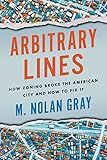
Arbitrary Lines: How Zoning Broke the American City and How to Fix It



Key to the City: How Zoning Shapes Our World


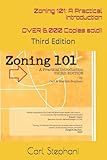
Zoning 101: A Practical Introduction: Third Edition


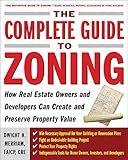
The Complete Guide to Zoning: How to Navigate the Complex and Expensive Maze of Zoning, Planning, Environmental, and Land-Use Law


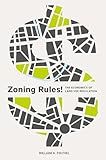
Zoning Rules!: The Economics of Land Use Regulation



Excluded: How Snob Zoning, NIMBYism, and Class Bias Build the Walls We Don't See


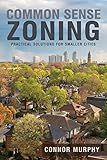
Common Sense Zoning: Practical Solutions for Smaller Cities



America's Frozen Neighborhoods: The Abuse of Zoning


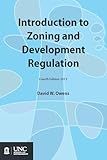
Introduction to Zoning and Development Regulation


Zoning is a planning tool used by local governments to regulate how land can be used within their jurisdiction. It involves dividing a municipality into different zones or districts with specific regulations and restrictions on the type of development and activities allowed in each zone. Zoning significantly affects property use and development in the following ways:
- Land Use Designation: Zoning establishes specific land use designations for different areas, such as residential, commercial, industrial, agricultural, or mixed-use. These designations determine what activities can take place on a particular property.
- Building Size and Density: Zoning regulates the size, height, and density of buildings in each zone. It may restrict the maximum number of stories, require setbacks from property lines, or limit the overall floor area ratio to control the density of development in a specific area.
- Setback and Lot Coverage Requirements: Zoning typically sets setback requirements that determine the minimum distance buildings must be positioned away from property lines, streets, or other structures. It also establishes lot coverage requirements that restrict how much land can be built upon to ensure aesthetic appeal, privacy, and public safety.
- Use Restrictions: Zoning can impose use restrictions that prevent certain types of businesses or activities from operating in specific zones. For example, industrial activities might be prohibited in residential areas to maintain a peaceful living environment.
- Parking and Landscaping: Zoning often establishes parking requirements to ensure adequate parking spaces are provided for different types of development. It may also include regulations for landscaping, open space, and buffers to enhance the aesthetics and environmental aspects of the community.
- Environmental Protection: Zoning regulations may also aim to protect sensitive areas such as wetlands, flood zones, or environmentally significant locations. Developers may be required to follow specific guidelines or obtain permits to mitigate potential environmental impacts.
- Future Development Planning: Zoning plays a vital role in shaping the long-term vision and growth of a community. It allows local governments to plan for the future by designating areas for future development or preservation, ensuring infrastructure and resources are appropriately allocated, and providing a framework for sustainable growth.
Overall, zoning is a crucial tool that establishes guidelines for land use and governs how properties can be developed. It helps maintain a balance between various land uses, encourages economic development, preserves community character, protects the environment, and ensures public safety and welfare.
How does zoning affect residential property development?
Zoning refers to the laws and regulations that divide an area into different zones or districts, establishing specific land use requirements and restrictions for each zone. Zoning can have a significant impact on residential property development in the following ways:
- Land Use Restrictions: Zoning regulations determine the type of activities or structures that can be built on a piece of land, including residential, commercial, industrial, or mixed-use. Residential zoning designates areas exclusively for housing, ensuring that only residential properties can be developed in those zones.
- Density and Size Restrictions: Zoning ordinances often impose restrictions on the density and size of residential developments. They may dictate the maximum number of units allowed on a specific parcel, the minimum lot size required for construction, or the maximum height of buildings. Such restrictions can impact the scale and density of residential development in a given area.
- Building Codes and Design Standards: Zoning regulations also govern the design and aesthetic features of residential properties. These codes may govern the setback requirements, the ratio of the building size to the lot, the design of the facade, parking requirements, landscaping, and other aspects of development. Compliance with these standards is necessary to obtain permits for construction.
- Neighborhood Character and Preservation: Zoning can play a role in preserving the character and integrity of established residential neighborhoods. It can prevent incompatible developments by setting aesthetic standards, improving compatibility, or preserving historic districts. Zoning regulations may require certain design guidelines or architectural styles to maintain the neighborhood's overall appearance and protect property values.
- Public Services and Infrastructure: Zoning helps plan for the necessary services, facilities, and infrastructure required to support residential developments. By enforcing regulations on density and land use, zoning ensures that there is appropriate provision for utilities, transportation, schools, parks, and other public amenities needed to support a growing population.
- Property Value and Market Demand: Zoning can influence property values by controlling the mix and quality of residential development in an area. Zoning regulations that promote desirable neighborhoods, well-planned communities, or restrict certain undesirable land uses can positively impact property values. Conversely, restrictive zoning that limits development or imposes excessive regulations may reduce market supply, driving up prices due to limited availability.
In summary, zoning regulations have a profound impact on residential property development. They determine the type, density, design, and overall character of developments, influence property values, and ensure the provision of necessary infrastructure and services.
What is the impact of zoning on property insurance rates?
Zoning can have a significant impact on property insurance rates. Here are a few ways in which zoning can affect insurance premiums:
- Zoning restrictions: Zoning regulations determine how properties can be used and developed within a specific area. For example, some areas may be zoned for residential use only, while others may be designated for commercial or industrial purposes. If a property is located in an area with restrictions that make it more vulnerable to certain perils, such as flood zones or earthquake-prone areas, insurance rates may be higher due to the increased risk of damage.
- Proximity to fire stations: Zoning regulations often require certain distances between properties and fire stations or hydrants. The proximity to fire protection infrastructure can impact insurance rates, as properties located closer to such facilities are generally considered to have a decreased risk of fire damage.
- Building codes and safety standards: Zoning regulations also play a role in determining building codes and safety standards that must be followed during construction or renovation. Compliance with these codes can help reduce the risk of damage from perils such as fire, windstorms, or earthquakes. If a property doesn't meet the required building codes, insurance rates may be higher to account for the increased risk.
- Liability risks: Zoning can also impact liability risks associated with a property. If a property is zoned for commercial use and attracts a higher number of visitors, there may be an increased risk of accidents or injuries occurring on the premises. Insurance rates for properties with higher liability risks may be higher to cover potential legal and medical expenses.
It's important to note that the impact of zoning on insurance rates can vary depending on the insurer, location, and specific factors related to the property. Insurance companies assess multiple factors when determining premiums, including the property's location, construction materials, previous insurance claims, and more.
What is the relationship between zoning and community infrastructure?
Zoning and community infrastructure are closely related as they both play vital roles in shaping the development and organization of communities.
Zoning refers to the set of regulations and guidelines implemented by local governments to designate specific land uses and control the type, density, and height of buildings within different areas of a community. Zoning determines where residential, commercial, industrial, recreational, and other types of land uses can be located, effectively separating incompatible uses and ensuring efficient land utilization.
Community infrastructure, on the other hand, refers to the physical facilities and systems that support the functioning of a community. This includes the transportation network (roads, bridges, public transport), utilities (water supply, sewage, electricity), public facilities (schools, parks, libraries), and other essential services and amenities.
The relationship between zoning and community infrastructure is that zoning influences the location and density of development, which in turn affects the demand for and design of community infrastructure. Zoning regulations may require certain infrastructure improvements to be in place before development can occur, such as the provision of adequate water and sewer services or the construction of new roads to accommodate increased traffic.
Furthermore, zoning can also influence the availability and accessibility of community infrastructure. For instance, zoning regulations may require developers to include public open spaces, parks, or community centers within their projects, thereby contributing to the overall availability of such facilities within a community.
In summary, zoning and community infrastructure are interlinked, with zoning regulations guiding the location and density of development, while community infrastructure supports and facilitates the functioning and well-being of a community. Effective coordination and planning between zoning and community infrastructure are crucial for creating sustainable, functional, and livable communities.
How does zoning impact the availability of public services?
Zoning can have a significant impact on the availability of public services in several ways:
- Spatial distribution: Zoning regulations dictate the permitted land uses in specific areas. This can influence the spatial distribution of public services such as schools, parks, libraries, police and fire stations, and healthcare facilities. Zoning may require the provision of certain public services within designated zones, ensuring their availability and equitable distribution across the community.
- Infrastructure planning: Zoning regulations often consider the need for supporting infrastructure such as roads, sewer systems, and utilities. By designating areas for specific uses, like residential, commercial, or industrial, zoning can guide the planning and provision of necessary infrastructure. Adequate infrastructure is essential for delivering public services effectively, enabling their availability and accessibility to residents.
- Housing affordability: Zoning can impact the availability of affordable housing, which in turn affects the accessibility of public services. Zoning regulations may restrict the development of low-income housing or affordable housing options within a community. This can lead to housing scarcity and result in limited access to public services for lower-income individuals or marginalized communities.
- Transportation and walkability: Zoning decisions can influence transportation infrastructure, affecting the availability of public transportation options and the walkability of neighborhoods. For example, mixed-use zoning that encourages the integration of residential and commercial spaces can contribute to walkable communities and reduce dependence on cars. This can enhance access to public services like shops, schools, and other amenities within a reasonable distance.
- Urban sprawl: Zoning can impact the density and growth patterns of a community. If zoning regulations allow for extensive suburban sprawl, it can lead to dispersed development and increased distances between residences and public services. This can result in higher costs for service delivery and limited availability of public services, particularly in remote or less populated areas.
Overall, zoning plays a crucial role in shaping the physical and social fabric of communities, thereby influencing the availability and accessibility of public services for residents. Proper zoning practices can help ensure the equitable distribution and efficient provision of these services throughout a community.
How does zoning regulate the location of certain businesses?
Zoning regulations are a set of rules and guidelines established by local governments to control the use and development of land within their jurisdiction. These regulations play a crucial role in directing where certain types of businesses can be located. Here is how zoning regulates the location of businesses:
- Zoning Districts: Local authorities divide their jurisdiction into different zoning districts, such as residential, commercial, industrial, and mixed-use districts. Each district has specific regulations governing the types of activities and businesses that are permitted within its boundaries.
- Permitted and Conditional Uses: Zoning regulations typically provide a list of permitted uses for each district. Permitted uses are activities that are allowed as a right without any specific approval process. However, certain businesses or activities may be classified as conditional uses that require additional scrutiny and authorization through a permitting or approval process.
- Use Classifications: Businesses are classified into various categories or classes depending on their nature, such as retail, office, restaurant, industrial, etc. Zoning regulations stipulate specific zones where each class of business is allowed, either as a permitted or conditional use. For example, a specialized manufacturing plant might only be allowed in an industrial zone.
- Land Use Intensity: Zoning regulations also control the intensity or scale of certain businesses. For example, commercial districts may limit the size, height, or square footage of buildings, restrict parking space requirements, or impose limitations on noise, lighting, or density to maintain compatibility with the surrounding area.
- Buffer Zones: Zoning often includes buffer zones to separate conflicting land uses. These zones act as a transition area between different types of districts to reduce potential conflicts, such as a buffer area between residential properties and industrial zones to minimize noise or pollution impacts.
- Variances and Special Exceptions: In some cases, businesses that do not strictly conform to the zoning regulations may be able to obtain variances or special exceptions through a legal process. This requires demonstrating that the proposed business will not significantly affect the surrounding area or violate the overall zoning objectives.
Overall, zoning regulations help local governments maintain control over land use and ensure that certain businesses are located in appropriate areas. These regulations aim to promote public health and safety, preserve the character of neighborhoods, maintain compatibility between land uses, and manage the impact of businesses on the community.
What is the impact of zoning on the preservation of open spaces?
Zoning is a planning tool used by local governments to regulate land use and development within their jurisdictions. The impact of zoning on the preservation of open spaces can be significant. Here are a few ways zoning can affect the preservation of open spaces:
- Zoning for conservation: Zoning can designate certain areas as conservation or open space zones, protecting them from development or limiting it to specific activities compatible with preserving the natural integrity of the area. This ensures that open spaces remain untouched or minimally disturbed, preserving their ecological, recreational, and aesthetic values.
- Density and setback regulations: Zoning regulations often include rules about building density and setbacks, which determine how closely structures can be built together and how far they must be set back from property lines or natural features. By requiring larger setbacks or lower densities in certain areas, zoning can provide buffers around open spaces, preventing encroachment and maintaining their visual and physical separation.
- Transfer of development rights (TDR): In some cases, zoning can facilitate the transfer of development rights from ecologically valuable or sensitive lands to designated receiving areas. Landowners in areas with conservation value can sell or transfer their development rights to developers in urban or less ecologically sensitive zones. This incentivizes the preservation of open spaces by allowing landowners to reap financial benefits while protecting natural areas from development.
- Cluster zoning: Cluster zoning is a technique that permits increased density in certain areas in exchange for preserving open spaces within the development. By concentrating development in more compact areas, developers can preserve larger portions of the property as open space, ensuring the conservation of natural features, such as wetlands, forests, or meadows.
- Environmental impact assessments: Zoning regulations can require developers to conduct environmental impact assessments before approving projects. These assessments evaluate the potential environmental effects of proposed developments, including impacts on open spaces. By considering the ecological value of open spaces and the impacts of development, zoning can help ensure that any proposed projects minimize harm to these areas or provide mitigation measures when development is unavoidable.
Overall, zoning plays a crucial role in preserving open spaces by shaping land use patterns, encouraging conservation, and preventing incompatible developments. It aims to strike a balance between development needs and the protection of valuable open spaces, contributing to the creation and maintenance of sustainable and livable communities.
